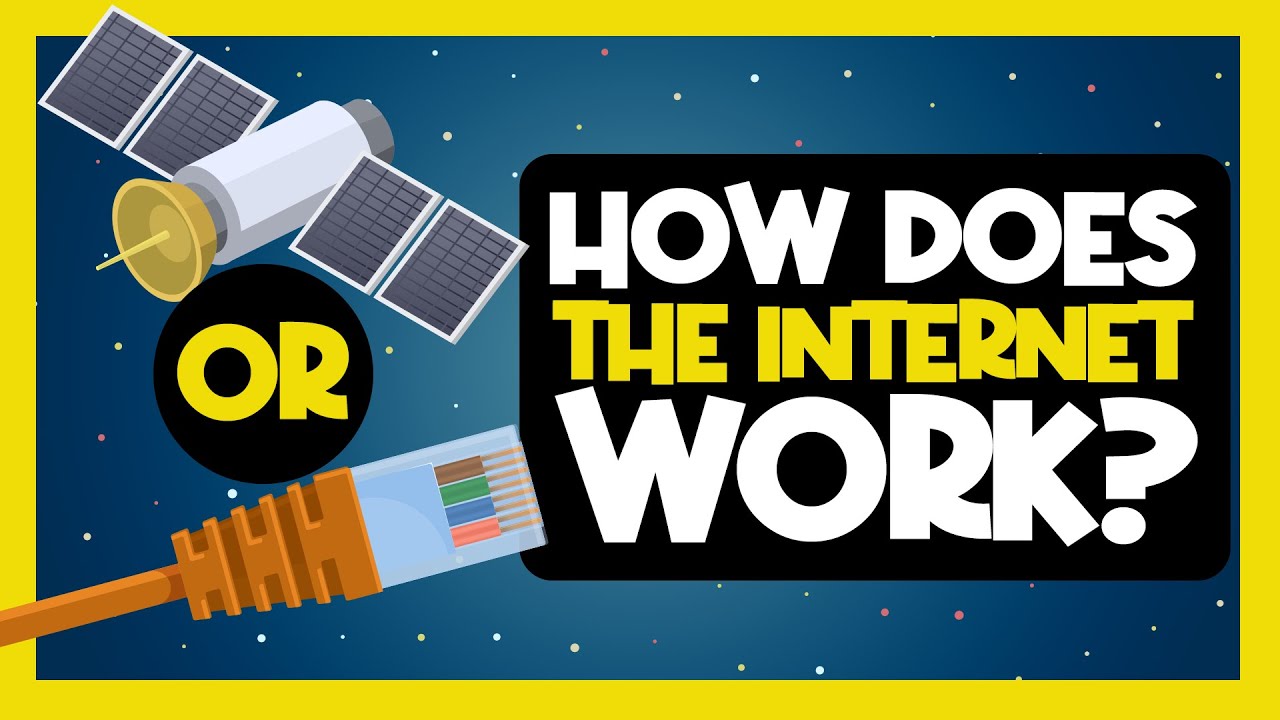Thin underwater cables hold the internet. See a map of them all.
Summary
TLDRThe internet, often thought of as residing in the cloud, is actually supported by 300 undersea fiber optic cables that facilitate 99% of global data traffic. These cables, smaller than a soda can, are protected by layers including petroleum jelly and are laid using a simple yet complex process involving ships and ocean currents. Despite innovations like Facebook's satellites and Google's balloons, undersea cables remain the backbone for international connectivity, a tradition dating back to the 1858 Atlantic crossing and evolving from early telegraph experiments.
Takeaways
- 🌐 The internet relies heavily on undersea fiber optic cables, which handle 99% of international data traffic.
- 🌊 These cables are the modern equivalent of the terrestrial connections, but they run underwater instead of underground.
- 📡 They enable global connectivity, such as streaming content like PewDiePie's videos from Europe to America and connecting stock traders across different continents.
- 🔌 Despite their critical role, these cables are relatively small, about the size of a soda can.
- 🛡️ The cables have several protective layers, including petroleum jelly, to safeguard them from water damage.
- ⚠️ They are susceptible to damage from natural disasters like earthquakes and occasionally from marine life, such as sharks.
- 🐋 Many cables are laid at depths where they are less likely to be disturbed by sea life or human activity.
- 🚢 The cables are installed using a plow that digs a shallow groove in the ocean floor, and then they are naturally covered by sand due to ocean currents.
- 📈 The process of laying these cables is both simple and complex, yet it's essential for the global internet network.
- 📱 While there are experimental alternatives like satellites and balloons for internet connectivity, undersea cables remain the backbone for fast international data transfer.
- ⏳ The concept of undersea communication dates back to 1858 with the first transatlantic cable, showing a long history of innovation in this field.
Q & A
What is the primary medium for international data transmission?
-The primary medium for international data transmission is undersea fiber optic cables, which are responsible for 99% of international data traffic.
How many undersea fiber optic cables are there, and what percentage of international data do they handle?
-There are about 300 undersea fiber optic cables that handle 99% of international data traffic.
What is the physical size of an undersea cable, and what is it protected by?
-An undersea cable is no bigger than a soda can and is protected by a few layers, including petroleum jelly.
Why are undersea cables vulnerable to earthquakes?
-Undersea cables are vulnerable to earthquakes because seismic activity can disrupt or damage the cables, affecting data transmission.
Have there been instances where sharks have bitten undersea cables?
-Yes, there have been at least a few instances where confused sharks have bitten undersea cables.
How deep do undersea cables go underwater, and why?
-In some places, undersea cables go as deep underwater as Mount Everest is high to avoid sea life and reduce the risk of damage.
What is the process of laying an undersea cable on the ocean floor?
-A ship lowers a plow that digs a tiny groove in the ocean floor, lays the cable in, and it's naturally buried by sand due to the ocean's current.
How long has the concept of undersea communication cables been around?
-The concept of undersea communication cables has been around for 157 years, starting with electric telegraphs in the early 1800s.
What was the first material used to protect undersea cables, and how has it evolved?
-The first material used to protect undersea cables was exotic tree sap. It has evolved to petroleum jelly and other protective layers in modern cables.
How do modern undersea cables connect the world, and what is the speed of this connection?
-Modern undersea cables connect the world by being unwound from the back of a ship, sinking to the ocean floor, and enabling data transmission at speeds measured in milliseconds.
What are some alternative methods to undersea cables for providing internet access, and how do they compare?
-Alternative methods include internet beamed from Facebook satellites to Africa and Google's internet balloons. However, for speedy international data transmission, undersea cables are still preferred by companies like Facebook and Google due to their reliability and speed.
Outlines

此内容仅限付费用户访问。 请升级后访问。
立即升级Mindmap

此内容仅限付费用户访问。 请升级后访问。
立即升级Keywords

此内容仅限付费用户访问。 请升级后访问。
立即升级Highlights

此内容仅限付费用户访问。 请升级后访问。
立即升级Transcripts

此内容仅限付费用户访问。 请升级后访问。
立即升级浏览更多相关视频

Kabel Serat Optik, Bagaimana Cara Kerjanya?

How Submarine Fiber Cable Installed?

What is the internet and How Does the Internet Work? | Network and Internet explained

How the Internet Works in 4 Minutes | Animation Video

FOA Lecture 1: Fiber Optics & Communications

Beginilah Perjalanan Internet ke Gadgetmu Lewat Dasar Laut
5.0 / 5 (0 votes)
